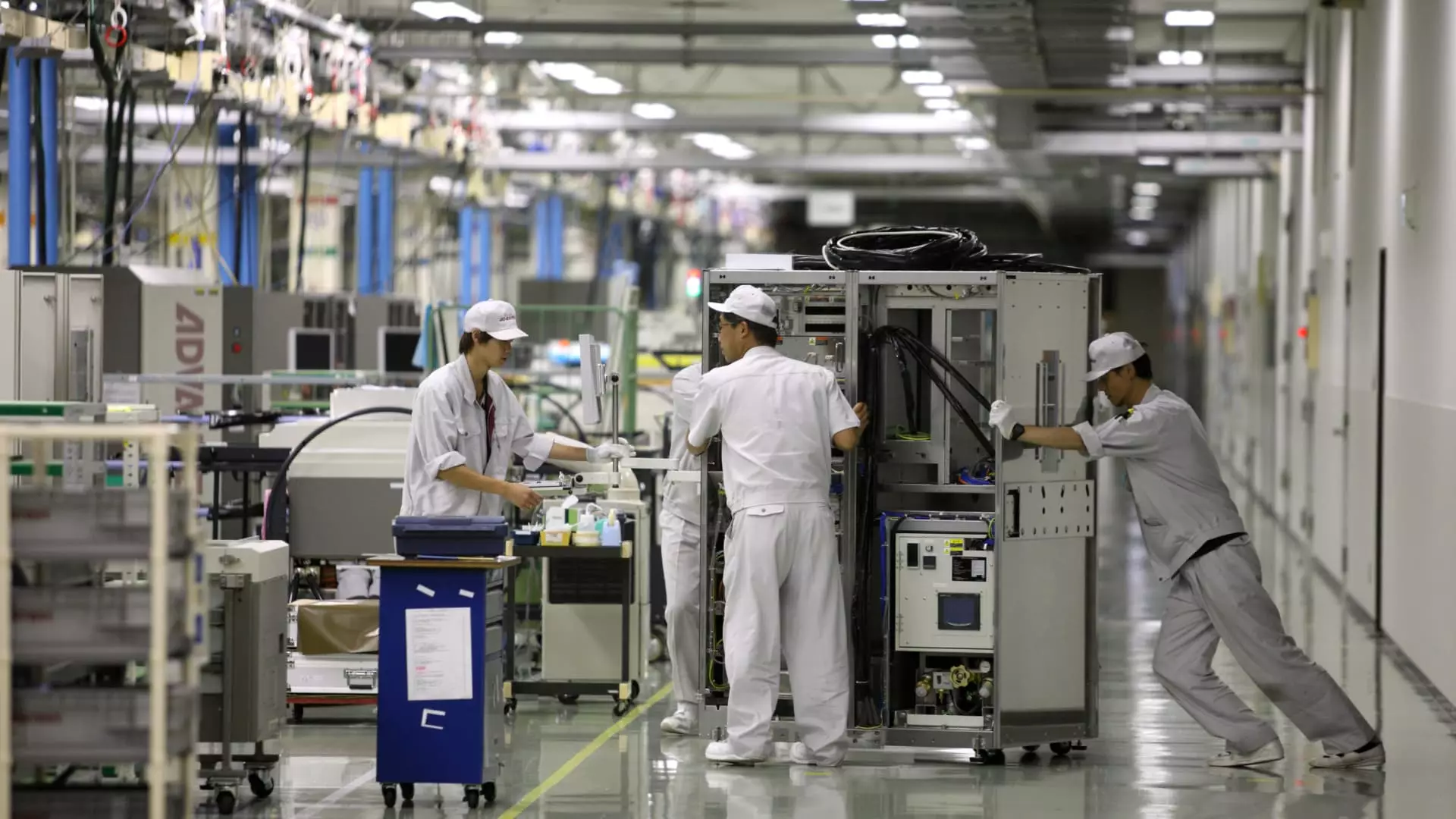As the global technology landscape evolves, the emergence of Chinese startups like DeepSeek signifies a notable shift in the artificial intelligence (AI) hierarchy. This development poses significant implications not just for American tech giants but also for Asian semiconductor companies that are intricately woven into the fabric of the U.S. AI value chain. The recent decline in Japanese chip stocks is a stark indicator of the growing anxiety surrounding DeepSeek’s competitive emergence, showcasing how a single player can influence broader market sentiments.
The introduction of DeepSeek’s open-source large language model has reverberated throughout the stock market, highlighting the challenges faced by established companies. The model, reportedly developed in a mere two months at an astonishing cost under $6 million, stands as a testament to the accelerated pace of innovation coming out of China. This rapid development contrasts sharply with the more measured approaches typically associated with Japanese technology firms, raising questions about their ability to respond in an environment where time-to-market is crucial.
In the wake of DeepSeek’s advancements, Japan’s semiconductor-related stocks experienced a notable slump. Advantest, a key supplier in semiconductor testing, saw its shares tumble by nearly 8%. Other companies, including Tokyo Electron and Softbank Group, registered significant declines as well. This trend reveals a broader rotation among investors from growth-oriented stocks—often associated with high valuations and future potential—towards more value-driven companies. Financial analysts have pointed out that this exodus reflects heightened unease regarding the future prospects of Japan’s semiconductor sector amidst growing competition.
Jesper Koll, a seasoned investor, emphasizes that while Japanese chipmakers possess the potential to compete on a global scale, their current capacity for large-scale production remains a significant hurdle. This juxtaposition of capabilities raises urgent questions about the sustainability of Japan’s technological ambitions in light of China’s aggressive pursuit of leadership in AI and semiconductor manufacturing.
The consequences of DeepSeek’s initiative extend beyond individual stock movements to impact entire market sectors. Companies involved in data center infrastructure are positioned precariously, as the market recalibrates in response to shifting technology expenditures. Predictions of a rough trajectory for U.S. tech markets could become a self-fulfilling prophecy, demonstrating how Asian companies are not only influenced by local market trends but also by global currents.
Analysts suggest that the implications of DeepSeek’s rise may necessitate a reevaluation of how traditional tech giants view their pricing strategies and investments in AI. This ongoing dialogue around investment reallocation could lead to companies rethinking their approaches to both technology and capital allocation.
DeepSeek’s Emerging Position in the AI Ecosystem
DeepSeek’s rapid ascent is marked not just by technological prowess but also by its strategic maneuvering amidst heavy regulatory pressures. The American government’s semiconductor restrictions on China create a complex backdrop, potentially limiting the resources available to Chinese startups. Despite these challenges, DeepSeek’s ability to thrive and capture the attention of consumers—demonstrated by it becoming the most downloaded free app on Apple’s platform—raises crucial questions about the longevity and scalability of their model in the face of regulatory uncertainties.
Venture capitalist Chamath Palihapitiya’s assertion that the volatility experienced may prompt the market to seek a revaluation of other tech giants, particularly Nvidia, underscores the precarious balance between innovation and market perception. Companies that once enjoyed unparalleled pricing power must now grapple with emerging competitors who are willing—and able—to challenge the established order at a lower price point.
The unfolding narrative surrounding DeepSeek serves as a critical reminder of the rapid evolution within the tech industry; it is a landscape marked by both opportunity and disruption. With Japan’s semiconductor sector now under pressure, stakeholders must confront the challenge of adaptation—whether that involves embracing innovation, enhancing production capabilities, or reassessing competitive strategies in an increasingly interconnected world. As the dust settles on this dramatic shift, the broader implications for both investors and the industry will undoubtedly continue to evolve, demanding vigilance and adaptability from all players involved.

